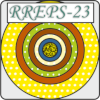Speaker
Description
In this report the influence of the magnetic domain structure and the effects of surface magnetism on the perfection of crystalline materials and their diffraction characteristics will be discussed. The canted antiferromagnet FeBO3 was used as a model crystal due to its anomalously strong magnetoelastic interaction.
To carry out the experiments, a synchrotron technique for X-ray diagnostics under the influence of external magnetic fields has been developed. It was established that the magnetic domain structure and near-surface magnetism effects lead to the appearance of disordered areas in FeBO3 crystals and slight changes in the lattice parameters. This affects the broadening or splitting of the reciprocal lattice point and diffraction properties of the crystal become worse. An applied external magnetic field improves the diffraction characteristics of FeBO3 crystals.
The evolution of the magnetic domain structure of Fe1-xGaxBO3 single crystals in external magnetic fields was studied using X-ray topography. It is shown that the application of weak magnetic fields is sufficient to significantly reduce the X-ray diffraction contrast in the topograms and, accordingly, improve the degree of structural perfection of crystals. In addition, time-resolved synchrotron diffraction experiments were carried out on FeBO3 single crystals under the influence of alternating magnetic fields. It is was shown that it is possible the ability to control the parameters of the diffraction characteristics of iron borate crystal in accordance with the external magnetic field modulation law. allows to modulate the angular and spectral parameters of X-ray, reflected from the FeBO3 single crystal to be modulated. The developed technique and the results obtained are extremely important for practical applications of magnetically ordered crystals, such as iron borate FeBO3, in new high-tech fields of science and technology.
This work was performed with a financial support by the Ministry of Science and Higher Education under the State Assignment of the Federal Research Center “Crystallography and Photonics” of the Russian Academy of Sciences and within the framework of grant No. 075-15-2021-1362.
